Roden 1/32 Fokker Dr1
By Mikael Terfors

This is Rodens Fokker Dr1 in 1:32. It really beats the pants of the old Revell kit in terms of accuracy and detail, even if there are some issues to be dealt with. Roden's kits can be a bit fiddly to assemble, but in this scale it was not a major problem, even if forward planning is really important. Dry fitting prior to assembly is highly recommended! Roden does a really neat job with the interior detail for the cockpit and engine. Even so, I wanted to add some more, and got Eduard's PE set complete with MG cooling jackets. Seatbelts, instruments and various plates were really nicely pre-painted.
I have always liked Josef Jacobs all black Fokker DR1, so I was very happy to see that this was one of the options contained in the box. Jacobs was a Pour le Merite recipient and the ace that logged the most victories on the DR1 of all, perhaps as many as 30. (The Baron himself only had 19 confirmed). Jacobs also used the DR1 in combat longer than most, having exchanged the original engine, for a captured 130hp Clerget (same as on the Camel), making the DR1 faster in combat, which surprised many opponents. My model precedes this engine exchange though…

Painting an all black scheme may sound quite easy, but on the contrary, proved a bit of a challenge. In order to be able do shadows, I painted the plane in a mixture of black and red, producing a slightly brown hue. This way it was possible to darken some areas with pure black. As these planes came from Fokker with a camouflage of light blue undersides, this would have "shown through" the black, making it lighter. I therefore sprayed the underside using Schwartz Grau. The Decals went on without too many problems. The devils head looks really good on the side of the all black plane. Care must be taken not to rip them, as they are quite thin, and you don.'t have to use much setting solution. Weathering was done using artists oils and dry pastels.
Rigging was not a huge undertaking on this kit, as Fokker constructed the DR1 with a sturdy internal structure. The few lines that are there, were done using fishing line painted in a dark metal hue.
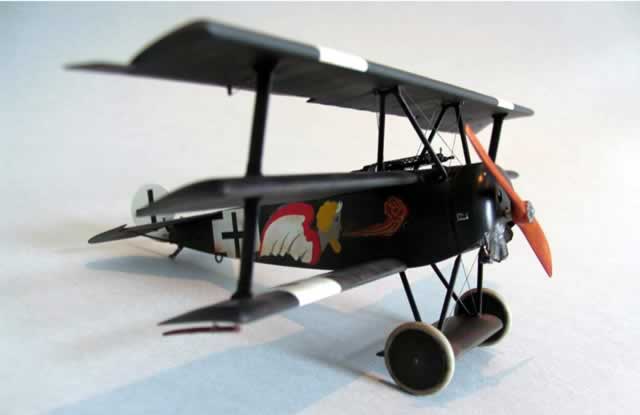
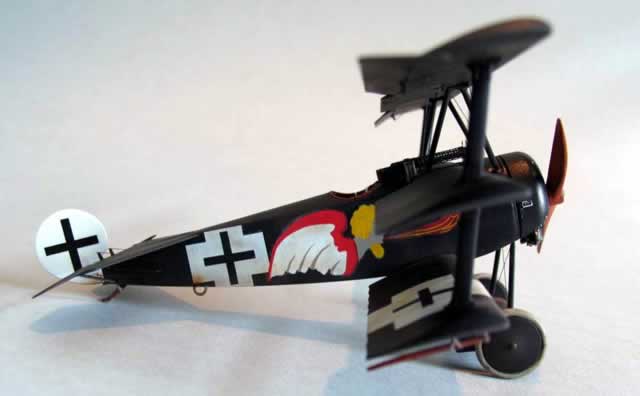
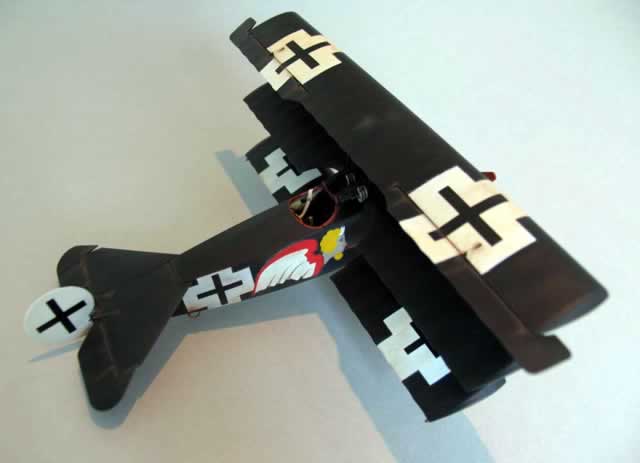
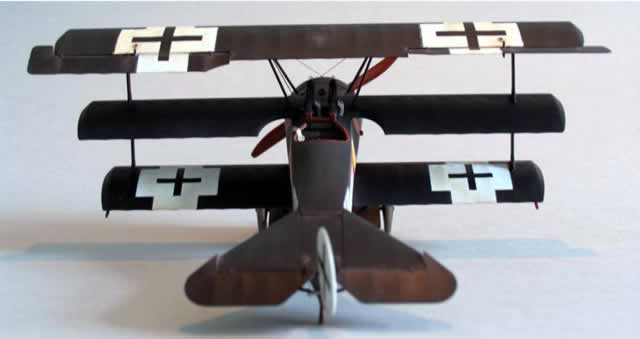

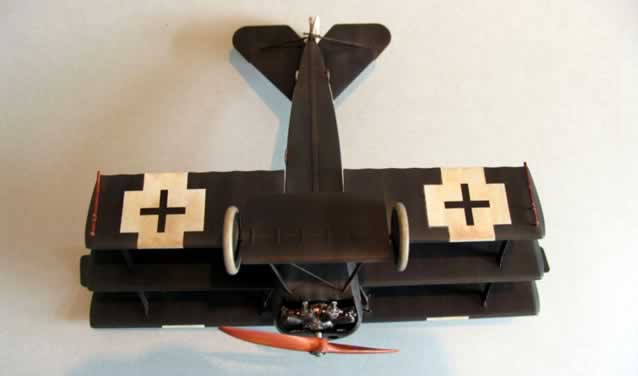
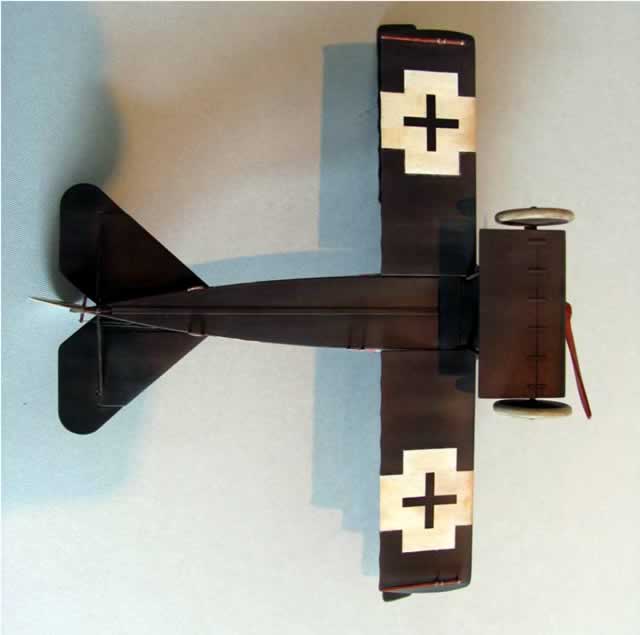
© Mikael Terfors 2006
This article was published on Friday, September 27 2013; Last modified on Saturday, May 14 2016
